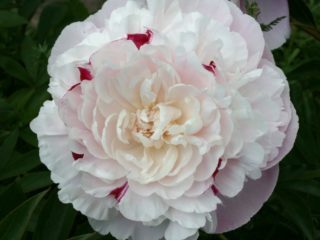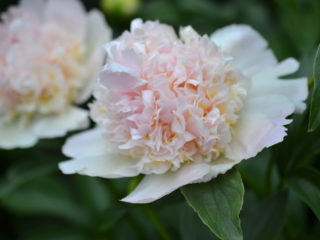Content
The range of garden lilies is so diverse that it can satisfy even the most demanding taste. However, individual groups of perennials have significant differences from each other. And while some are undemanding to care, others require special growing conditions. Therefore, it is worth understanding how Asiatic lilies differ from oriental lilies, since they are the most common groups of perennials. This will allow you to make the right choice, depending on the purpose of their acquisition.

Oriental species are also called Oriental
What is the difference between Asiatic and Oriental lilies
Despite the close relationship between the Asian and Eastern groups, there are significant differences between them. They are noticeable in the appearance of plants, as well as in the cultivation characteristics and frost resistance of perennials.
Flowering time
One of the most important differences between these lilies is the timing of flowering. In Asian species, the buds open already at the end of June, at the beginning of July. Therefore, they are considered the earliest of all existing groups of garden lilies. The duration of their flowering is about 15-17 days.
Unlike Asians, the buds of oriental hybrids bloom only a month later, namely in the first ten days of August. They have a longer flowering period. It lasts for 20-25 days.
What kind of lilies smell: Oriental or Asian?
Also, when choosing perennials, you need to know which scented lilies are Asiatic or Oriental, since many people suffer from allergies.
The first ones have no smell. Moreover, this feature is preserved even in new varieties. Unlike Asian lilies, on the contrary, they exude a subtle, pleasant aroma. It is especially intensified in the evening, as well as when cutting flowers. Therefore, it is not recommended to place such a bouquet in the bedroom, as the smell can cause headaches and allergies.
Flower color
There is also a difference in color between Asian and Oriental species. The former are dominated by brighter hot shades. The most common Asian varieties are orange, yellow, and red. But among them there are also white cream, burgundy shades and two- and three-color types. It is not uncommon for Asian women to have dark contrasting strokes and specks on the petals.
Oriental species are mostly represented by a palette from white to gold, from pink to bright purple. They completely lack red and orange shades. And the yellow color is extremely rare and is present as an addition to white, pink or crimson.
Flower shape and size
The diameter of flowers in Asian species is about 15-17 cm. And their shape is bell-shaped, star-shaped, turban-shaped, simple and terry. The petals are narrow, with smooth edges.
Oriental lilies, unlike Asiatic lilies, have large flowers. Their diameter can be 30 cm. The petals are wide, with a beautiful waviness along the edge, and the tips are curved outward. The shape of flowers in oriental hybrids is in the form of a wide bell, turban-shaped, star-shaped, simple and double.

In both groups, the buds can be directed upwards, to the sides and downwards
Features of cultivation
There is also a difference in the growing habits. Asiatic lilies are considered the most unpretentious. They are able to fully develop and bloom profusely both in sunny and slightly shaded areas. Asians are less demanding on the composition of the soil and do not require complex care. They have increased resistance to diseases and pests.
Oriental lilies, unlike Asiatic lilies, are considered capricious. Loose, nutritious soil with a low acidity level is extremely important for them. It is necessary to plant orientals in a well-lit place, since the brightness of the color depends on this. Also, the difference between eastern species is that they react sharply to errors in care and inappropriate growing conditions. This increases the likelihood of them being affected by fungal and viral diseases and can cause the death of the plant.
Frost resistance
There is also a difference in the level of frost resistance. Asiatic lilies can easily withstand frosts down to -34 °C. Moreover, their bulbs remain viable even in the absence of snow cover in winter. Therefore, these species do not need shelter for the winter.
Oriental lilies, unlike Asian lilies, belong to the category of heat-loving plants. They can withstand temperatures down to -15-17 °C, which makes it difficult to grow them not only in the northern, but also in the central regions.And also for their successful wintering it is important to exclude increased soil moisture. Therefore, in the fall, when dry weather sets in, oriental lilies need to be covered not only with leaves and spruce branches, but also with film.

Orientals produce fewer daughter bulbs
Which lily is best to plant?
Knowing the differences between Asiatic and Oriental lilies, we can conclude that the first group is more suitable for growing in the garden. This will allow you to enjoy their flowering for many years with minimal care.
In relation to Orientals, we can say that they require increased attention to themselves. And when choosing them, you need to soberly assess your strengths. You can simplify the cultivation of orientals by planting them in flowerpots or pots. In this case, it will be possible to provide the plants with the necessary care and overwinter in a cool room, which will eliminate the possibility of them freezing.
Conclusion
Asiatic lilies differ from oriental lilies not only in appearance, but also in characteristics. When choosing species for planting on a personal plot, this must be taken into account so as not to be upset later when, after winter, not all selected varieties will be able to please with lush flowering.








